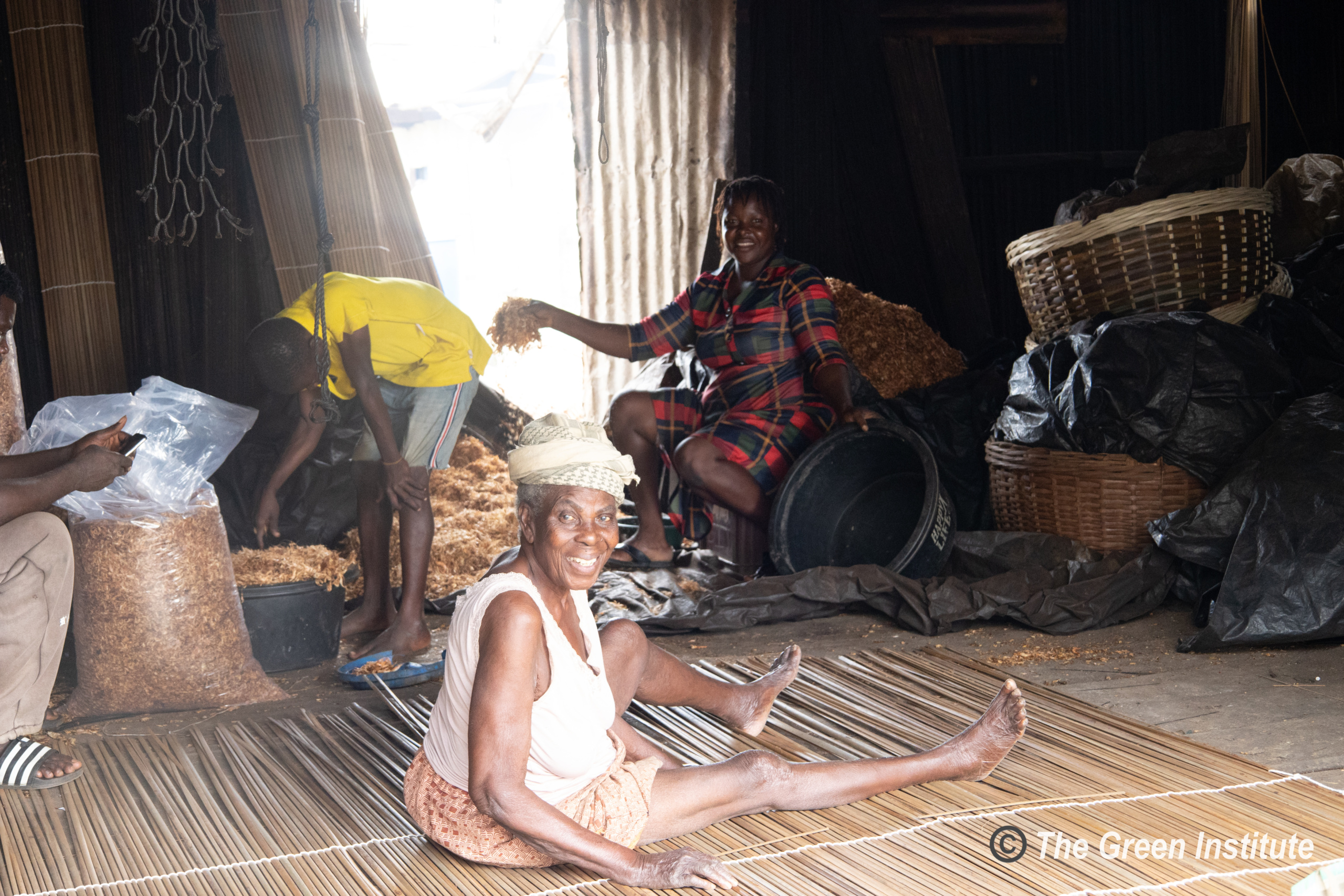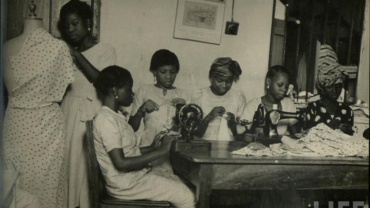If dawn belonged to the fishermen of Ayetoro, then the day belonged to its women. By the time the boats returned and nets were hauled in, the shoreline had already begun to transform into a bustling market space. Women spread out along the sand, arranging wooden racks, mats, and trays. Soon, the salty air was filled with the unmistakable scent of fresh catch and the sight of women in wrappers and headscarves, busy at the work that sustained both households and community: drying fish.
In 1950s Ayetoro, market day was not merely about commerce; it was about rhythm, connection, and survival. The women were the backbone of this economy. Once the fish were sorted from the morning haul, they set to work cleaning, salting, and laying them out to dry under the sun. Archival photographs show long rows of fish neatly arranged, shimmering like silver in the light, while women crouched over them with practiced ease. Children darted between the racks, carrying small baskets or helping to chase away birds, their laughter mixing with the chatter of their mothers.
Oral histories recall the atmosphere as lively and communal. Women called out greetings to one another, shared stories, and sometimes sang hymns as they worked. Market day was also a place of exchange — not only of goods but of knowledge, advice, and encouragement. Newly married women learned from elders how to cure fish so it would keep longer, while widows were supported by neighbours who helped them manage their trade. In Ayetoro, no woman stood alone; the shore was their shared workshop, their social forum, and their economic engine.
The drying process itself was both practical and symbolic. By preserving fish, the women extended the life of the sea’s gift, turning a day’s catch into weeks of nourishment and trade. Traders came from neighbouring villages to buy, carrying Ayetoro’s name far beyond its waters. The fish became both food and currency, feeding the town and fuelling its reputation as a thriving coastal economy.
For the women, however, the work was about more than trade. It was an act of stewardship and service. As one elder later recalled: “When we dried fish together, we were not only feeding our families. We were feeding the whole town.” Their labour ensured that children had meals, that markets thrived, and that the covenant of communal life was upheld.

Visitors to Ayetoro often marvelled at these scenes. To them, the sight of women lined along the coast, working in unison with the ocean breeze at their backs, embodied the harmony of the Happy City — a place where faith, work, and community were seamlessly woven together.
Today, while erosion has reshaped the shoreline, the memory of those market days endures. Photographs and testimonies preserve the image of women, strong and steadfast, turning the gifts of the sea into sustenance for all. In their drying racks and salted trays lay not only fish, but the essence of Ayetoro itself: resilience, cooperation, and the quiet strength of women working side by side beneath the sun.




